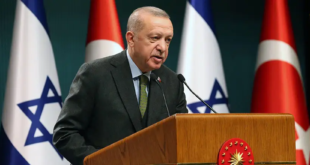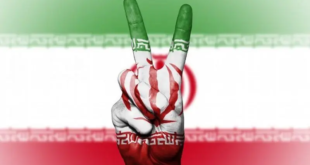 BAGHDAD (AP) — US attack helicopters chattered overhead Wednesday as American and Iraqi troops fought a ferocious daylong battle with fighters who fired heavy weapons from concrete high-rises in a stronghold just north of the heavily fortified Green Zone.
BAGHDAD (AP) — US attack helicopters chattered overhead Wednesday as American and Iraqi troops fought a ferocious daylong battle with fighters who fired heavy weapons from concrete high-rises in a stronghold just north of the heavily fortified Green Zone.
Iraq said 30 men were killed and 27 captured.
New details also emerged about the downing of a private US security company helicopter on Tuesday, with US and Iraqi officials saying that four of five Americans who died in the incident had been shot execution-style.
Explosions could be heard across the city and black smoke rose from the Haifa Street area as armoured vehicles converged on the tree-lined avenue on which former leader Saddam Hussein had erected tall apartment buildings for loyalists as well as Arab dissidents, mainly Syrians who defected from the rival Baath Party branch in Damascus and moved to Iraq.
Iraqi army and American troops moved into the neighbourhood at 5:00am Wednesday to launch targeted raids in a third bid this month to clear the area of gunmen in an operation dubbed Tomahawk Strike 11. The combined force faced fierce resistance from insurgents using handgrenades, rocket-propelled grenades and small arms from high-rise buildings in the area, the US military said.
There were conflicting numbers of insurgents reported killed and captured in the clashes — the third major fighting to break out in the area in less than a month. The area sits on the west bank of the Tigris River about two kilometres north of the Green Zone, site of the US and British embassies as well as the Iraqi government headquarters.
The US military said seven suspected insurgents were detained and heavy weapons were seized, including numerous rocket-propelled grenades, anti-tank rounds and 155mm artillery rounds. The Iraqi defence ministry said 30 insurgents were killed and 27 captured, including four Egyptians and a Sudanese.
A spokesman at the cultural ministry, Jabbar Al Mashhadani, said US and Iraqi forces rushed into the building on the edge of Haifa Street and told all the employees to go home as they fanned out and sent snipers to the roof.
At least one civilian was killed and seven others were wounded, hospital and police officials said.
The military reported separately that an American soldier was killed Wednesday in clashes near the city’s centre, but officials declined to give more specifics or say whether the death was connected to the Haifa Street fighting.
Two US Marines also were reported were killed on Tuesday during combat in Anbar province, the military said.
An Iraqi government spokesman said the Haifa Street operation was aimed at clearing the area of “terrorists and outlaws” who had been targeting local residents. He promised the raids would continue on Haifa Street and elsewhere as US and Iraqi troops prepare for a broader security crackdown to stanch the sectarian bloodletting that has turned Baghdad into a battlefield.
“The security forces intend to chase those elements with all their available resources, the operations haven’t finished on Haifa Street,” he said on Iraqiya state television. “I think these operations will continue even in other districts… these are the preparations for the Baghdad security plan.” Haifa Street, a major avenue in central Baghdad, was built in the late 1970s and cuts through the neighbourhood where Saddam attended school as a teenager and where he once lived with his maternal uncle and future father-in-law.
It has been the site of repeated clashes, including a major battle on January 9, just three days after Prime Minister Nouri Maliki announced his new security plan for pacifying Baghdad. The fighting broke out again about a week later.
A bronze statue of Iraq’s late King Faisal on horseback sits at one end of the broad avenue. During a visit to the neighbourhood after the 1991 Gulf war, residents complained to Saddam about their poverty, prompting him to order homes demolished and new apartment complexes built.
Just off Haifa Street is a square where a large statue for Saddam’s cousin and brother-in-law, Adnan Khairallah, still stands. It was widely believed that Saddam was behind a helicopter crash in 1989 in which Khairallah was killed because the late defence minister was gaining popularity with Iraqis.
US Ambassador Zalmay Khalilzad, meanwhile, offered condolences for five Americans killed in Tuesday’s helicopter crash the day before, called them good men and said he had travelled with them.
But confusion still cloaked Tuesday’s crash of a Blackwater USA helicopter as it flew over a dangerous Sunni neighbourhood elsewhere in the capital while a gunfight was raging below.
A senior Iraqi military official said a machinegunner downed the helicopter and four of the men had been shot execution-style on the ground, but a US military official in Washington said there were no indications that the aircraft had been shot out of the sky. Three Sunni insurgent groups, separately, claimed responsibility for the crash, with one posting the ID cards of one of the men killed on its website.
In Washington, a US defence official said four of the five killed were shot in the back of the head but did not know whether they were still alive when shot. The defence official spoke on condition of anonymity because he was not authorised to speak on the record.
The helicopter went down after racing to help a US embassy ground convoy that came under fire in a Sunni neighbourhood on the east side of the Tigris, said a US diplomatic official in Washington.
A second helicopter also was struck, but there were no casualties among its crew, said the diplomatic official, who spoke anonymously because he was not authorised to make statements.
The doomed helicopter swooped into electrical wires before the crash. US officials said it was not clear if gunfire brought the aircraft down or caused its pilot to veer into the wires during evasive manoeuvres.
Another American official in Baghdad, who spoke on condition of anonymity, said three Blackwater helicopters were involved. One had landed for an unknown reason and one of the Blackwater employees was shot at that point, he said.
That helicopter apparently was able to take off but a second one then crashed in the same area, he added without explaining the involvement of the third helicopter.
The Qatar-based Al Jazeera television said the 1920 Revolution Brigades, a Sunni insurgent group, claimed responsibility for shooting down the helicopter and showed a video taken by a cellphone of a mass of still-smoldering twisted metal that it was said was the wreckage of the chopper.
The Islamic Army, in a statement posted on an Islamic website, said it had downed a helicopter on Tuesday at about 1 p.m. in the nearby Maydan area.
Another Sunni insurgent group, the Ansar Al Sunnah Army, also claimed responsibility and posted identity cards of men who were on the helicopter on a website, including at least two that bore the name of Arthur Laguna, who was later identified by his mother as among those killed.
Laguna was a 52-year-old pilot for Blackwater who previously served in the army and the California National Guard, his mother, Lydia Laguna, of Rio Linda, Calif., told the AP.
It was the second helicopter crash in Iraq in four days. A US army Black Hawk helicopter went down Saturday northeast of Baghdad, killing all 12 service members on board. The American military in Baghdad has refused to confirm a report by a Pentagon official that debris at the crash site indicated the helicopter was shot out of the air by a surface-to-air missile.
Violence was unrelenting Wednesday in Iraq, with at least 69 people killed or found dead, including 33 tortured bodies that were found in separate locations in Baghdad and four policemen who died when a parked car bomb struck their patrol in western Baghdad.
 Eurasia Press & News
Eurasia Press & News



